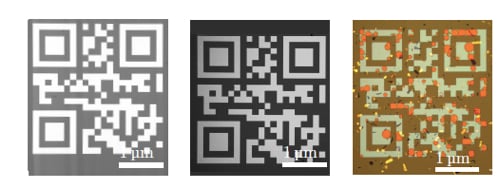Original URL: https://www.theregister.com/2014/01/06/billionyear_disk/
'BILLION-YEAR DISK' to help FUTURE LIFEFORMS study us
Boffins fab 'gigayear' demo...'We didn't account for theft, nuclear explosion'
Posted in Storage, 6th January 2014 08:02 GMT
Boffins have devised a storage medium that could hold data for up to one billion years and claim recent accelerated ageing tests have shown "million-year" survivability.
The study's authors are Jeroen de Vries of the University of Twente MESA and Institute for Nanotechnology, and colleagues Dimitri Schellenberg, Leon Abelmann1, Andreas Manz and Miko Elwenspoek.
Their paper (PDF), in pre-print in ArXiv, is titled "Towards Gigayear Storage Using a Silicon-Nitride/Tungsten Based Medium".
Its abstract states: "If we want to preserve anything about the human race which can outlast the human race itself, we require a data storage medium designed to last for 1 million to 1 billion years."
Well, yes, er ... back to the technology.
The authors, involved with The Human Document Project, write: "To ensure that knowledge about human life is available for many future generations or even future lifeforms we require a form of data storage suitable for storage at extreme timescales."
The storage medium is "tungsten encapsulated by silicon nitride which, according to elevated temperature tests, will last for well over the suggested time."
Current 4TB hard drives can store data for about 10 years before the content starts decaying, the authors say. Tape will last a few decades and archival paper could last 500 years with the right environment.
The study's authors write: "A new type of storage medium is required where the longevity of the data is more important than the storage density," and this WORM-type medium should last for one million to one billion years with stored data being readable using electro-magnetic waves:
The disk can contain multiple levels of data with different data densities. Using visible light the low density data could be read by eye or using optical microscopy. Higher density data could be made visible by for instance electron beams.A dedicated readback system would in this case not be stored with the data carrier because such a system would also need to survive for at least as long as the disk. Plans to create a readback system could be part of the information on the data carrier.
Storing data for such a long time means the medium must have a high energy barrier against erasure. The energy barrier required for a certain storage time can be determined by the Arrhenius law.
The paper states: "Data is stored in one of the energy minima of the system, which is separated from the other minima by an energy barrier" and "for 1 billion years the energy barrier should be raised to 70 kBT* (1.8 eV at room temperature)."
Verifying a million and multi-million year data storage endurance time can potentially be determined through accelerated ageing using elevated temperature testing and checking the error rate per time unit. So "the required testing temperature to prove that the data is stable for a million years within a year is 380 Kelvin."
The boffins dryly state: "Other causes of data loss, such as theft, meteor impact or the Sun entering the red giant phase cannot be revealed by accelerated ageing (fortunately)."
They say that data should be recorded in or on a tungsten medium which is encapsulated in Silicon Nitride (Si3N4). Tungsten has a high melting temperature and high activation energy plus a low thermal expansion coefficient. Silicon Nitride possesses high fracture toughness, has a low thermal expansion coefficient and is transparent to light. However the Silicon Nitride layer thickness can be tuned to produce high contrast in reflection:
If the layer thickness is tuned correctly, constructive interference can occur in the parts where there is no metal and destructive interference in the parts where metal is present or vice versa ... This makes it possible to have a much thicker base because the sample does not need to be optically transparent.
Demonstrations were produced recording information in 2D barcodes using QR code as decodable by smartphones. The authors claimed accelerated ageing tests demonstrated million-year survivability.

Optical microscope images of the same QR code left: after fabrication, centre: after two hours at 613 Kelvin and right: two hours at 763 Kelvin
The boffins say their "initial attempt to create a medium containing embedded data which is able to survive for 1 million years is promising."
Their work is continuing and we'll be able to tell you much, much more by the year 1002014. Stay tuned. ®
* A scaling factor relating to thermodynamic entropy, kBT represents the product of the Boltzmann constant, kB, and the temperature (T).